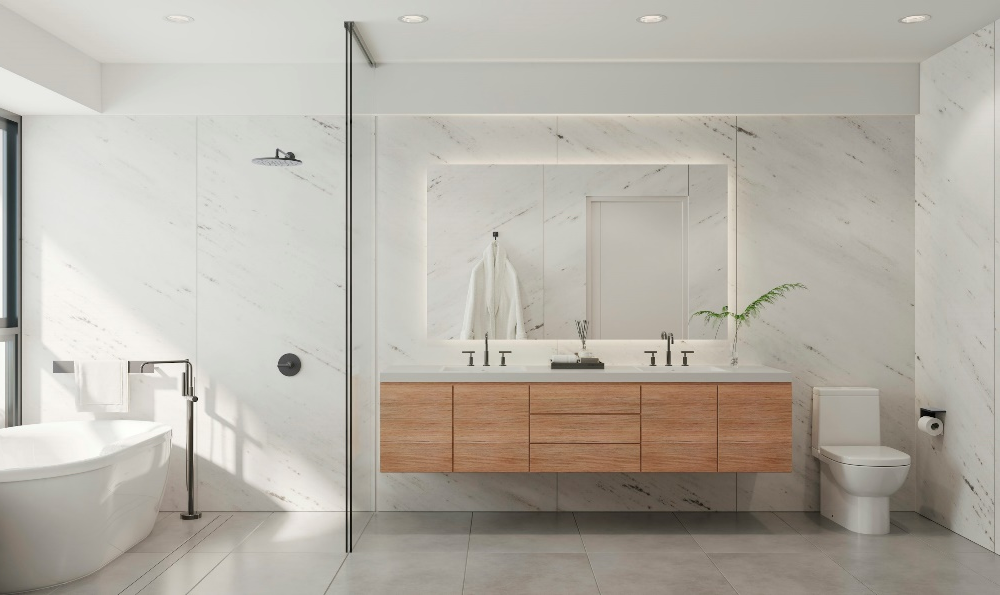Creating a Spa-Like Ambience in Everyday Living Areas
The idea of transforming daily living spaces into calming sanctuaries has gained increasing attention in modern interior design. A spa-like ambience is not just about visual beauty but also about cultivating an environment that promotes relaxation, serenity, and mental clarity.
Everyday living areas, from bathrooms to bedrooms and living rooms, can be thoughtfully designed to evoke this sense of peace. In places where leisurely, wellness-inspired living has become a defining lifestyle, such as in Orlando, this approach to interior design reflects the growing desire to create soothing retreats at home.
The key lies in combining subtle design elements, sensory enhancements, and functional arrangements that encourage unwinding after long, stressful days.
Enhancing Serenity in the Bathroom
The bathroom often serves as the primary space for self-care, making it the ideal starting point for creating a spa-inspired retreat. Thoughtful choices in colors, textures, and fixtures can transform it into a peaceful haven. Soft, neutral shades—such as beiges, warm grays, and muted whites—help create a calming backdrop, while natural elements like wood and stone add a grounded, inviting feel.
Lighting is essential for setting the mood. Warm, dimmable fixtures provide a gentle glow, and candles strategically placed in key spots enhance the soothing atmosphere. Adding humidity-loving greenery introduces freshness and improves air quality, while eucalyptus or lightly scented oils create a spa-worthy aroma.
Those seeking a complete transformation can look to the refined, comfort-focused designs found in Orlando bathroom remodel projects because they’re centered around relaxation and practicality.
These designs often feature elements such as freestanding tubs, rainfall showerheads, and built-in shelving—perfect for displaying towels and bath essentials neatly while evoking the airy, resort-like ambiance common in regions renowned for their relaxed lifestyle.
Living Room Transformations for Restful Evenings
The living room, often the hub of daily activities, can double as a space for relaxation if designed thoughtfully. Comfortable seating is fundamental; opt for plush, ergonomically supportive sofas or chairs with soft, textured fabrics that invite relaxation. Layered textiles, such as cozy throws and cushioned rugs, add warmth and tactile comfort.
Lighting again plays a significant role. Instead of harsh overhead lights, use floor lamps, table lamps, or wall sconces with warm-toned bulbs to create a soft, inviting glow. Natural light during the day should be maximized through sheer curtains or blinds that filter sunlight rather than blocking it completely.
Decluttering is essential to achieving a spa-like feel. Minimalist arrangements with neatly stored essentials encourage mental calmness by reducing visual chaos. Integrating nature-inspired elements, such as decorative bowls filled with smooth stones or wooden accent pieces, strengthens the connection to natural serenity.
Sound and scent further enhance the experience. A small water feature or sound machine with gentle nature sounds can promote tranquility, while subtle aromatherapy—such as lavender or sandalwood diffusers—can transform the living room atmosphere from busy to serene within minutes.
Bedroom Retreats for Deep Relaxation
A spa-like ambience in the bedroom revolves around encouraging restful sleep and deep relaxation. Soft, breathable bedding made from cotton or linen allows comfort without feeling overly heavy. Layered textures, such as a light quilt paired with a soft duvet and cushioned pillows, enhance the sense of comfort.
The color choice in the bedroom should be muted and soothing. Shades of light gray, soft beige, or pastel tones evoke a sense of calmness and help prevent overstimulation. Wall art should be minimal and nature-inspired to maintain a restful visual field.
Blackout curtains can help regulate natural light exposure, while soft, warm lighting—preferably through bedside lamps with adjustable brightness—maintains a calming evening environment. A designated relaxation corner, such as a reading nook with a comfortable chair and a small side table, can further enhance the spa-like experience.
Incorporating Spa-Inspired Sensory Elements
A spa-like ambience extends beyond visuals, relying heavily on sensory experiences. Aromas have a profound impact on mood, making natural essential oils a valuable addition to one’s life. Calming scents like chamomile, lavender, and sandalwood can be introduced through diffusers or scented candles, but they should be used in a subtle manner rather than overwhelming.
Soft sounds, such as instrumental music or recordings of natural elements like rain or ocean waves, reinforce relaxation. These can be played through discreet speakers to provide a soothing background atmosphere.
Textures also play a critical sensory role. Plush rugs, smooth stones, and soft throws add layers of tactile comfort. Natural materials, especially wood and stone, are preferable as they connect occupants to nature, promoting mental relaxation.
Maintaining Cleanliness and Order
One of the defining features of a spa is its uncluttered and organized environment. Everyday living spaces can achieve this through consistent decluttering and the use of functional storage solutions. Closed cabinets, baskets, or decorative boxes keep items out of sight, maintaining a clean and serene look.
Surfaces should remain largely clear, with only a few carefully chosen decorative elements. The goal is to minimize visual distractions and create open spaces that feel airy and welcoming. Regular maintenance, such as dusting and airing out rooms, keeps the environment fresh and inviting.
Thoughtful Use of Natural Elements
Spas often incorporate natural elements to promote grounding and relaxation, and the same principle applies to living spaces. Plants, for instance, introduce greenery, improve air quality, and evoke a sense of vitality. Low-maintenance indoor plants, such as snake plants, peace lilies, or ferns, are ideal for maintaining a calming vibe without requiring excessive care.
Natural materials, such as bamboo, rattan, and unfinished wood, can be used for furniture or decorative accents. Stone bowls, wooden trays, or woven baskets enhance the organic feel of a space, reinforcing the spa-like atmosphere.
Natural light is another essential factor. Whenever possible, maximize daylight exposure, as it not only brightens interiors but also supports mental well-being. Large mirrors strategically placed opposite windows can help reflect light, making spaces feel more open and airy.
Transforming everyday living areas into spa-like retreats requires a careful balance of visual, tactile, and sensory elements. Every design choice—from lighting and color palettes to scent and sound—should serve the purpose of relaxation and mental clarity. By focusing on decluttering, incorporating natural elements, and enhancing sensory experiences, it is possible to turn bathrooms, bedrooms, and living rooms into soothing sanctuaries. Over time, these subtle yet impactful changes can elevate daily routines, promoting a sense of peace and well-being that rivals professional spa experiences.







